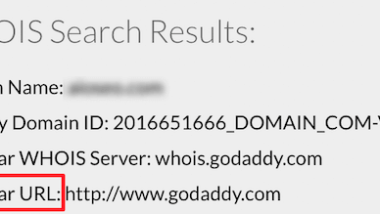In this article, you will learn how to register a domain name. We will guide you through the process step by step, so you can have your own unique online identity. We will also discuss the importance of choosing the right domain name and give you tips on how to find the perfect one for your website. By the end of this article, you will have all the information you need to register a domain name and start building your online presence.
How to Register a Domain Name
If you’re looking to establish a strong online presence for your business or personal brand, registering a domain name is the first step towards achieving that goal. In this article, we will guide you through the process of registering a domain name, from choosing a domain registrar to managing your domain settings. Let’s get started!

Choosing a Domain Registrar
Before you can register a domain name, you’ll need to choose a reputable domain registrar. A domain registrar is a company that provides the necessary infrastructure and services for registering and managing domain names. Some popular domain registrars include GoDaddy, Namecheap, and Bluehost.
When selecting a domain registrar, consider factors such as pricing, customer support, and user-friendly interface. It’s important to choose a registrar that offers competitive prices and reliable customer support, as you may need assistance throughout the registration process and beyond.
Checking Domain Availability
Once you’ve chosen a domain registrar, it’s time to check the availability of your desired domain name. Most domain registrars provide a search feature on their websites where you can enter your desired domain name and see if it’s available for registration.
Keep in mind that domain names are unique, meaning that once someone else registers a domain name, it becomes unavailable for others. So, it’s essential to come up with a few alternative domain name options in case your first choice is already taken.
Selecting the Right Domain Extension
After confirming the availability of your desired domain name, it’s time to choose the right domain extension. A domain extension, also known as a top-level domain (TLD), is the part of the domain name that comes after the dot. Some popular domain extensions include .com, .net, and .org.
When choosing a domain extension, consider the nature of your website or business. If you’re starting a commercial venture, .com is usually the most preferred option as it is widely recognized and trusted. However, if you’re running a non-profit organization, a .org extension may be more appropriate.
Providing Personal Information
To register a domain name, you’ll need to provide personal information such as your name, address, and contact details. This information is required by domain registrars to comply with ICANN (Internet Corporation for Assigned Names and Numbers) regulations.
When providing personal information, it’s essential to ensure its accuracy as it will be associated with your domain name registration. Additionally, some domain registrars offer the option to add privacy protection to your domain, which hides your personal information from public view.

Choosing a Domain Name
Now comes the exciting part – choosing the perfect domain name for your website or brand. A good domain name should be memorable, easy to pronounce, and relevant to your business or industry. It’s important to consider your target audience and the message you want to convey with your domain name.
Avoid using numbers, hyphens, or complex spellings, as they can make your domain name harder to remember or type correctly. It’s also a good idea to research potential trademark conflicts or similarities with existing domain names to avoid legal issues in the future.
Adding Domain Privacy
While registering a domain name, you may have the option to add privacy protection to your registration. Domain privacy, also known as WHOIS privacy, ensures that your personal information is kept private and not publicly accessible.
By enabling domain privacy, your personal information, such as your name, address, and contact details, will be replaced with generic information, safeguarding your privacy and protecting you from potential spam or unsolicited communication.

Completing the Registration Process
Once you’ve selected your desired domain name, chosen a domain extension, provided your personal information, and added any additional services like domain privacy, it’s time to complete the registration process.
At this stage, you’ll need to review your registration details carefully to ensure accuracy. Double-check your domain name, contact information, and selected services before proceeding with the payment. Once your payment is processed, you will receive confirmation of your domain name registration.
Managing Domain Settings
After successfully registering your domain name, you’ll gain access to a domain management panel provided by your domain registrar. This panel allows you to manage various aspects of your domain, such as DNS settings, email forwarding, and domain redirection.
It’s important to familiarize yourself with the domain management features provided by your registrar. This will enable you to make any necessary changes to your domain settings, such as connecting your domain to a website hosting provider or setting up professional email addresses associated with your domain.

Renewing and Transferring a Domain
Domain names are typically registered for a specific period, ranging from one to ten years. It’s crucial to keep track of your domain’s expiration date and ensure timely renewal to avoid losing your domain name.
Most domain registrars offer automatic renewal options, which can simplify the process and ensure that your domain remains active. Additionally, if you ever decide to transfer your domain to a different registrar, you’ll need to follow a specific process outlined by your new registrar.
Conclusion
Registering a domain name is a crucial step in establishing your online presence. By following the steps outlined in this article, you can confidently choose a domain registrar, check the availability of your desired domain name, and complete the registration process with ease.
Remember to choose a domain name that reflects your brand identity, select an appropriate domain extension, and consider adding privacy protection to safeguard your personal information. Regularly manage and renew your domain to ensure its continuity and explore additional features and services offered by your domain registrar.
With your newly registered domain name, you’re now ready to build your website, create engaging content, and reach your target audience effectively. Happy domain registration!





